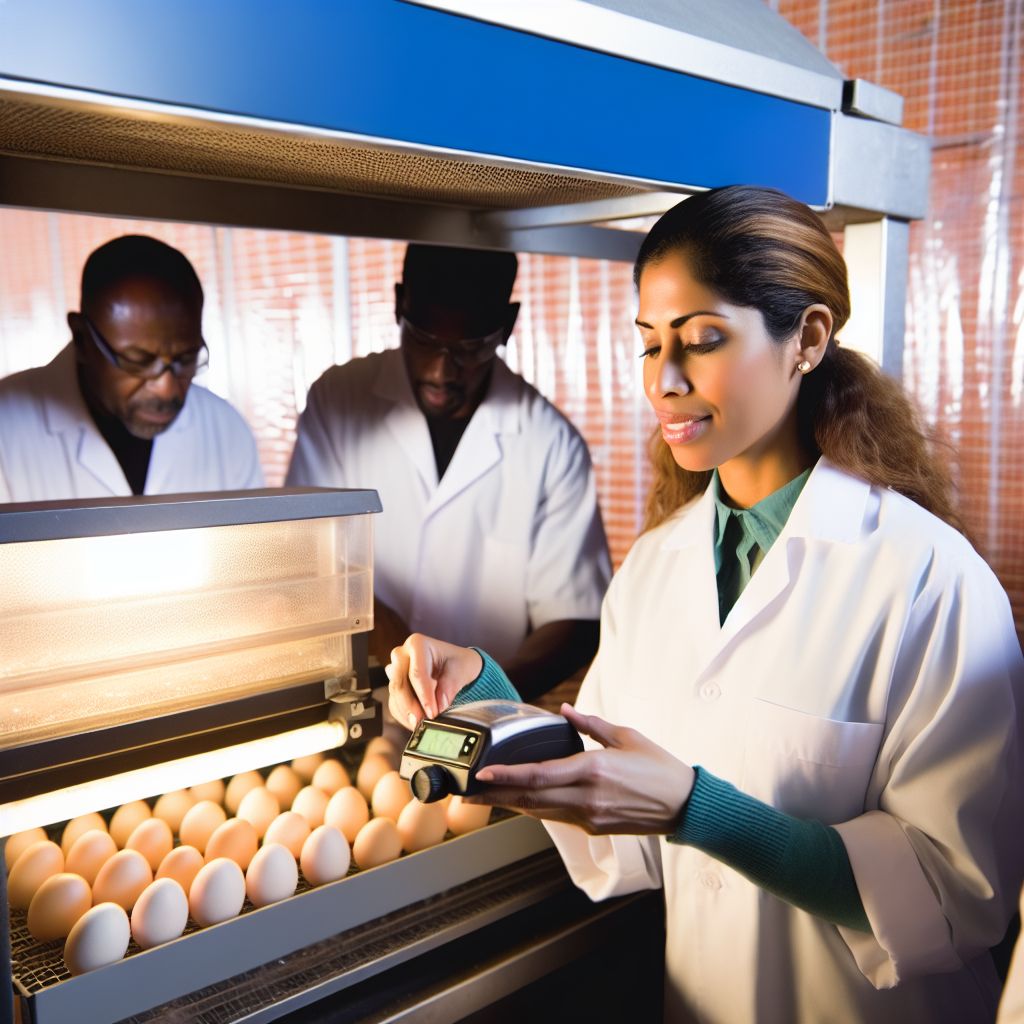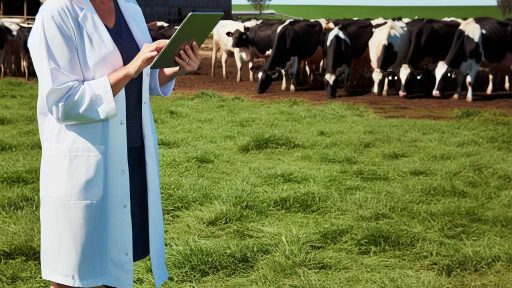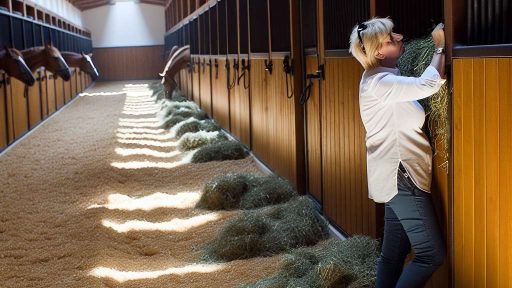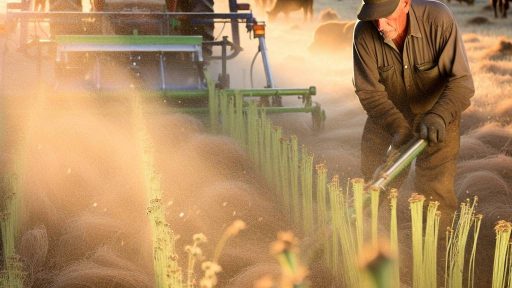Understanding the Importance of Hatchability in Poultry Production
Definition of Hatchability
Hatchability refers to the percentage of eggs that successfully hatch into chicks.
This metric directly influences poultry production efficiency.
Understanding hatchability helps in improving overall flock productivity.
Significance in Poultry Production
High hatchability rates signify effective management practices.
They reduce the cost of production per chick.
Moreover, better hatchability increases the supply of market-ready birds.
Factors Influencing Hatchability
Multiple factors affect hatchability rates in poultry.
Egg quality plays a crucial role in achieving high hatchability.
Environmental conditions during incubation also significantly impact outcomes.
Additionally, the health and nutrition of breeding flocks are vital.
Benefits of High Hatchability
Improving hatchability enhances farm profitability.
It allows for better resource allocation and management.
High hatchability supports genetic improvements in flocks.
Consequently, this leads to increased production of meat and eggs.
Factors Affecting Hatchability
Genetics
Genetics plays a crucial role in hatchability rates.
Transform Your Agribusiness
Unlock your farm's potential with expert advice tailored to your needs. Get actionable steps that drive real results.
Get StartedSpecific traits can determine the quality of eggs produced.
For example, egg-laying breeds often perform better in hatchability.
Breeding programs should focus on desirable characteristics.
This includes health, vigor, and reproductive performance.
Careful selection leads to improvements over generations.
Nutrition
Nutrition significantly impacts embryo development.
It is vital to provide a balanced diet to the breeding flock.
Adequate protein, vitamins, and minerals are essential.
Research shows a link between nutrition and hatchability rates.
Incorporating omega-3 fatty acids can enhance egg quality.
Regular monitoring and adjustments are necessary to optimize nutrition.
Environment
The environment influences hatchability in various ways.
Temperature and humidity during incubation are critical factors.
Maintaining consistent conditions supports embryo viability.
Proper ventilation is also necessary to prevent carbon dioxide buildup.
Egg handling practices impact outcomes as well.
Cleanliness reduces the risk of disease transmission.
Overall, a controlled environment enhances successful hatching.
Optimal Egg Handling Practices for Enhancing Hatchability
Understanding Egg Storage Conditions
Proper egg storage significantly impacts hatchability rates.
Maintain a consistent temperature between 15°C and 18°C.
High humidity levels of around 75% are essential.
Additionally, avoid direct sunlight exposure to the eggs.
Regularly monitor storage conditions to identify variations.
Implementing Gentle Handling Techniques
Eggs require careful handling to prevent damage.
Showcase Your Farming Business
Publish your professional farming services profile on our blog for a one-time fee of $200 and reach a dedicated audience of farmers and agribusiness owners.
Publish Your ProfileAlways wash hands thoroughly before touching the eggs.
Use padded gloves when transferring eggs to minimize impact.
Additionally, avoid stacking eggs directly on top of each other.
When moving eggs, keep them oriented with the pointed end down.
Cleaning and Sanitizing Procedures
Before handling eggs, sanitize all equipment and surfaces.
Use a food-safe sanitizer that conforms to guidelines.
Clean, dry, and disinfect incubators regularly to prevent contamination.
Ensure that the hatchery environment remains clean and hygienic.
Implementing Temperature Control Systems
Temperature regulation is crucial for egg incubation.
Utilize automated temperature control systems for accuracy.
Regularly calibrate temperature and humidity monitors.
Additionally, ensure that backup systems are in place for emergencies.
Monitoring for Fertility and Viability
Regularly assess eggs for fertility and viability before incubation.
Candle eggs to check for signs of embryo development.
Remove any unfertilized or non-viable eggs promptly.
This practice optimizes hatchability by focusing on healthy embryos.
Collaborate with a veterinarian for expert guidance on flock health.
Uncover the Details: Selecting The Ideal Apiary Location For Climate-Resilient Beekeeping Success
Incubation Techniques: Temperature, Humidity, and Ventilation Management
Understanding the Importance of Temperature
Temperature significantly influences embryo development in eggs.
Maintaining a consistent temperature is vital for maximizing hatch rates.
Generally, the ideal incubation temperature ranges between 99°F and 102°F.
Moreover, fluctuations can lead to developmental issues or embryo mortality.
Utilizing reliable thermometers ensures accurate temperature readings.
Additionally, calibrate equipment periodically to maintain optimal performance.
Humidity Management for Optimal Hatchability
Humidity levels play a key role in the hatching process.
Excessive humidity can suffocate embryos while too little can lead to dehydration.
Maintaining humidity between 45% to 55% during incubation is recommended.
Using hygrometers will help monitor humidity levels accurately.
Furthermore, adjusting humidity levels towards the end of incubation may support hatching.
It’s essential to ensure proper moisture without creating condensation.
Effective Ventilation Techniques
Ventilation helps provide necessary oxygen to developing embryos.
Inadequate airflow can lead to carbon dioxide buildup within the incubator.
Ensure that incubators are equipped with adequate ventilation systems.
Regularly checking airflow will maintain a healthy environment for the eggs.
Additionally, consider using fans to promote even air distribution.
Calibrating the ventilation system helps in achieving consistent results.
Implementing a Monitoring System
Employ a monitoring system for real-time data collection.
Automated systems can track temperature, humidity, and ventilation effortlessly.
This allows for quick adjustments as needed during the incubation period.
Furthermore, logging data helps identify patterns over multiple hatching cycles.
Showcase Your Farming Business
Publish your professional farming services profile on our blog for a one-time fee of $200 and reach a dedicated audience of farmers and agribusiness owners.
Publish Your ProfileConsulting experts in poultry management can improve monitoring efficiency.
Routine Maintenance Practices
Maintaining incubators is crucial for long-term functionality.
Regular cleaning prevents the buildup of bacteria and fungi.
Inspecting seals and gaskets ensures proper insulation and efficiency.
Additionally, calibrating equipment periodically maintains accuracy.
Don’t overlook the importance of training staff on best practices.
Education fosters a proactive approach to poultry management.
Delve into the Subject: Livestock Nutrition for Managing Feed Supply During Drought Conditions
The Role of Biosecurity Measures in Improving Hatchability Rates
Understanding Biosecurity
Biosecurity involves practices that prevent disease in poultry populations.
It protects both the birds and the hatch rates from disease outbreaks.
Strong biosecurity measures are essential for optimal hatchability.
Importance of Clean Facilities
Maintaining clean facilities is crucial for biosecurity.
Regular sanitation helps eliminate harmful pathogens.
In addition, ensuring proper waste management reduces contamination risks.
Furthermore, using disinfectants can help sanitize equipment.
Controlling Access to Poultry Houses
Limiting access to poultry houses is vital for effective biosecurity.
Only essential personnel should be allowed entry.
This minimization prevents potential disease introduction.
Additionally, providing visitors with protective gear is advisable.
Implementing Health Monitoring Protocols
Regular health monitoring identifies sick birds early.
This proactive approach prevents disease spread within flocks.
Monitoring can include physical inspections and health assessments.
Additionally, routine testing for common pathogens is beneficial.
Utilizing Vaccination Programs
Vaccination against common poultry diseases enhances overall health.
Effective vaccination programs significantly improve hatchability rates.
Consulting with veterinarians ensures vaccinations are timely and appropriate.
Regularly updating the vaccination schedule caters to emerging diseases.
Educating Staff on Biosecurity Practices
Training staff on biosecurity best practices is crucial.
Educated staff can better recognize and respond to biosecurity threats.
Furthermore, promoting awareness fosters a culture of responsibility.
Engaging seminars and workshops can enhance understanding.
Evaluating and Adjusting Biosecurity Policies
Regular evaluation of biosecurity policies ensures effectiveness.
Adjusting protocols based on emerging challenges keeps flocks safe.
Additionally, gathering feedback from staff can reveal improvement areas.
This practice promotes ongoing commitment to healthy poultry management.
Learn More: Sustainable Livestock Practices for Ethical Meat Production

Monitoring and Evaluating Embryonic Development During Incubation
Understanding the Incubation Process
The incubation process is critical for embryo development.
It requires precise control of temperature and humidity levels.
Proper monitoring ensures optimal conditions for hatchability.
Moreover, regular observation can indicate potential issues early.
Showcase Your Farming Business
Publish your professional farming services profile on our blog for a one-time fee of $200 and reach a dedicated audience of farmers and agribusiness owners.
Publish Your ProfileKey Parameters to Monitor
Temperature plays a vital role during incubation.
Maintain a consistent temperature between 99 and 102 degrees Fahrenheit.
Humidity levels also affect embryonic development significantly.
Humidity should remain around 50 to 55 percent in early stages.
Adjust humidity to 60 to 65 percent closer to hatching.
Utilizing Candling Techniques
Candling is an effective method to evaluate embryo development.
It allows visibility of the embryo’s growth without opening the incubator.
Start candling eggs around the seventh day after incubation begins.
Look for signs of blood vessels and movement during this inspection.
Documenting Observations
Keeping accurate records enhances your management practices.
Log temperature and humidity readings daily.
Additionally, note the conditions during candling sessions.
This documentation helps identify patterns and improve future hatch rates.
Troubleshooting Common Issues
Sometimes, embryos do not develop as expected.
Low hatchability can result from improper temperature or humidity.
Monitor egg turning to ensure proper development as well.
Inadequate turning can lead to embryo malformation.
Best Practices for Successful Operations
Ensure egg storage conditions are optimal before incubation.
Store eggs at a temperature of 55 to 60 degrees Fahrenheit.
Maintain humidity levels around 75 percent during storage.
Finally, rotate eggs gently during the storage period for best results.
Find Out More: Poultry Management for Broiler Meat Production
Implementing Effective Vaccination Programs to Reduce Infectious Diseases
Importance of Vaccination
Vaccination is crucial for poultry health.
Infectious diseases can severely impact hatchability.
Implementing a vaccination program can minimize these risks.
Vaccines help prevent the spread of pathogens.
Strong immunity leads to healthier birds and better productivity.
Types of Vaccines
Several types of vaccines exist for poultry.
Live vaccines often provide strong immunity quickly.
Inactivated vaccines are safe but may require multiple doses.
Recombinant vaccines can target specific pathogens effectively.
The choice of vaccine depends on the prevalent diseases.
Developing a Vaccination Schedule
A solid vaccination schedule is essential for success.
Consulting with a veterinarian is a good first step.
Consider the age and breed of the poultry when planning.
Keep records of vaccination dates and types used.
Monitor the flocks for any adverse reactions to vaccines.
Staff Training and Compliance
Training staff is vital for vaccination program success.
Everyone must understand the importance of vaccination.
Encourage staff to ask questions regarding procedures.
Showcase Your Farming Business
Publish your professional farming services profile on our blog for a one-time fee of $200 and reach a dedicated audience of farmers and agribusiness owners.
Publish Your ProfileRegular refresher courses can maintain knowledge levels.
Ensuring compliance will help minimize disease outbreaks.
Monitoring and Evaluation
Regular monitoring of the vaccination program is necessary.
Evaluate the effectiveness of vaccines periodically.
Collect data on disease incidences in vaccinated flocks.
Adjust vaccination strategies based on evaluation results.
Continuous improvement leads to better outcomes in hatchability.
Utilizing Technology: Automated Systems for Hatchery Management
Importance of Technology in Hatchery Management
Technology significantly enhances hatchery management effectiveness.
Automated systems streamline processes and reduce human error.
These systems ensure proper temperature and humidity control.
Consistent environmental conditions improve hatchability rates.
Types of Automated Systems
Automated monitoring systems use sensors to track conditions.
This technology provides real-time data regarding hatchery environments.
Incubator management systems automate egg turning and temperature regulation.
Additionally, hatchery management software aids in record-keeping and analysis.
Benefits of Implementing Automated Systems
Using automated systems can lead to increased efficiency.
They help minimize labor costs by reducing manual tasks.
Automation ensures uniformity in incubation conditions throughout batches.
Ultimately, these improvements contribute to higher hatchability rates.
Case Studies and Examples
FarmTech Innovations implemented automated monitoring successfully.
Their hatchery saw a 15% increase in hatchability in six months.
Similarly, Green Valley Poultry adopted incubator management systems.
They reported decreased energy consumption and enhanced productivity.
Future Trends in Hatchery Automation
Artificial intelligence will likely play a significant role in hatcheries.
AI can optimize hatchery operations based on data analytics.
Additionally, integration of IoT devices will enhance efficiency.
These innovations promise to revolutionize poultry management practices.
Additional Resources
Edgar Oviedo | Prestage Department of Poultry Science
4 steps to improve dairy cow fertility through feeding – EW Nutrition




